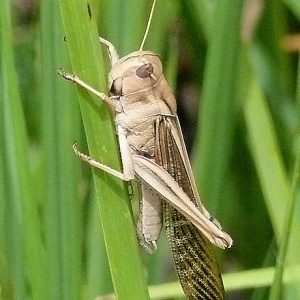
Losses of wheat, rice and maize to insects could increase by 10 to 25% per degree Celsius of climate warming, according to this paper. This is due to two main factors: insects have faster metabolisms at higher temperatures and therefore need to eat more; and insect population growth rates will also change with temperature.
In temperature regions, the paper predicts that both insect populations and their metabolic rate will increase, causing greater losses of crops. In tropical regions, however, insects’ metabolic rates may increase while their population growth rates decline, causing a lower overall increase in crop damage than in temperate regions.
Abstract
Insect pests substantially reduce yields of three staple grains—rice, maize, and wheat—but models assessing the agricultural impacts of global warming rarely consider crop losses to insects. We use established relationships between temperature and the population growth and metabolic rates of insects to estimate how and where climate warming will augment losses of rice, maize, and wheat to insects. Global yield losses of these grains are projected to increase by 10 to 25% per degree of global mean surface warming. Crop losses will be most acute in areas where warming increases both population growth and metabolic rates of insects. These conditions are centered primarily in temperate regions, where most grain is produced.
Reference
Deutsch, C.A., Tewksbury, J.J., Tigchelaar, M., Battisti, D.S., Merrill, S.C., Huey, R.B. and Naylor, R.L., 2018. Increase in crop losses to insect pests in a warming climate. Science, 361(6405), pp.916-919.
Read the full paper here. See also the Foodsource resource How do the climate and environment directly affect the conditions required for food production?







Post a new comment »